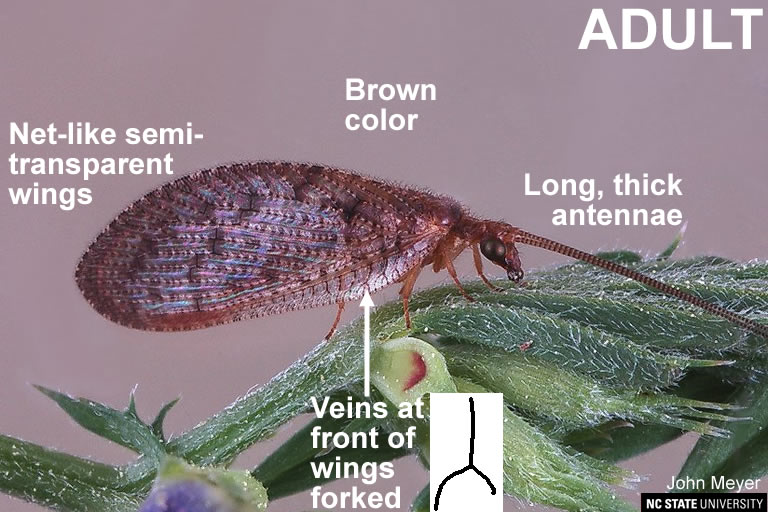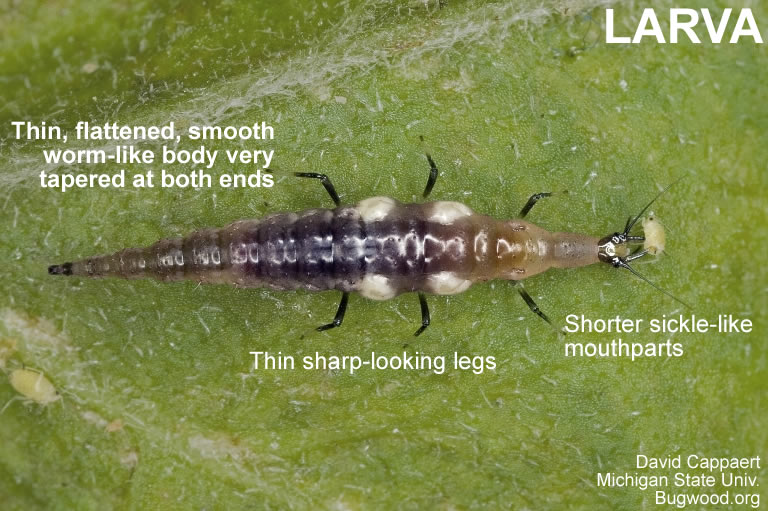Brown Lacewing
go.ncsu.edu/readext?563184
en Español / em Português
El inglés es el idioma de control de esta página. En la medida en que haya algún conflicto entre la traducción al inglés y la traducción, el inglés prevalece.
Al hacer clic en el enlace de traducción se activa un servicio de traducción gratuito para convertir la página al español. Al igual que con cualquier traducción por Internet, la conversión no es sensible al contexto y puede que no traduzca el texto en su significado original. NC State Extension no garantiza la exactitud del texto traducido. Por favor, tenga en cuenta que algunas aplicaciones y/o servicios pueden no funcionar como se espera cuando se traducen.
Português
Inglês é o idioma de controle desta página. Na medida que haja algum conflito entre o texto original em Inglês e a tradução, o Inglês prevalece.
Ao clicar no link de tradução, um serviço gratuito de tradução será ativado para converter a página para o Português. Como em qualquer tradução pela internet, a conversão não é sensivel ao contexto e pode não ocorrer a tradução para o significado orginal. O serviço de Extensão da Carolina do Norte (NC State Extension) não garante a exatidão do texto traduzido. Por favor, observe que algumas funções ou serviços podem não funcionar como esperado após a tradução.
English
English is the controlling language of this page. To the extent there is any conflict between the English text and the translation, English controls.
Clicking on the translation link activates a free translation service to convert the page to Spanish. As with any Internet translation, the conversion is not context-sensitive and may not translate the text to its original meaning. NC State Extension does not guarantee the accuracy of the translated text. Please note that some applications and/or services may not function as expected when translated.
Collapse ▲- Common Name: Brown Lacewing
- General Category: Predator
- Taxonomic Classification: Neuroptera: Hemerobiidae
- Scientific Name: Several species
Description
Like green lacewings, brown lacewings are predators of aphids as well as other small, soft-bodied arthropods such as mites, mealybugs and caterpillars. The adults and larvae are always predacious and the larvae are sometimes referred to as aphid lions.


Identification
Review the images for tips on how to identify these predators.
Adults
Brown color with wings smaller than green lacewings and semi-transparent net-like wings. Veins on front of forewing are forked, compared to those of green lacewings which are straight. Long, thick antennae. Appear superficially like caddisfly adults, but brown lacewings have shorter legs, well-developed mouthparts, and the forked wing veins.
Larvae
Narrow, worm-like bodies strongly tapered at both ends. Short, tubular pincer-like jaws.
Eggs
Unlike green lacewing eggs, brown lacewing eggs are not laid on stalks.
Value in Pest Management
Brown lacewings are not as abundant as green lacewings, but contribute to natural control of aphids and other small soft-bodied insects and insect eggs. They are sold commercially.
Origin and Distribution
Native, throughout North America.


